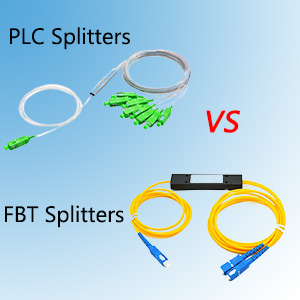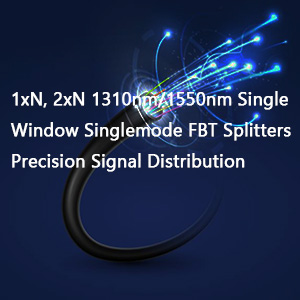Wavelength Division Multiplexing (WDM) technology revolutionizes network efficiency by enabling the transmission of multiple signals through a single fiber. Among the various WDM technologies, Filter WDM FWDM and Fused WDM stand out as two predominant types, each with its own set of advantages, applications, and characteristics. In this comprehensive analysis, we will explore the distinctions between these two types, how to discern between them, and which is more appropriate based on specific network requirements.

What is Filter WDM FWDM?
Filter WDM, also referred to as thin-film filter WDM, utilizes dielectric filters to separate different wavelengths of light within a single optical fiber. This WDM variant is renowned for its precision and its suitability for high-density, complex networks that demand meticulous signal management.
Key Characteristics of FWDM:
High Channel Isolation: FWDM excels in environments where preventing interference between channels is crucial. Its high isolation ensures minimal signal loss and interference, which is vital for complex networks handling substantial data volumes.
Accurate Wavelength Separation: The thin-film filters in FWDM modules provide highly accurate wavelength separation, making it ideal for scenarios requiring precise control over each wavelength.
Broad Usage in CWDM/DWDM Systems: FWDM is frequently employed in both Coarse Wavelength Division Multiplexing (CWDM) and Dense Wavelength Division Multiplexing (DWDM) systems, as these systems benefit from its wavelength isolation and precision.
Advantages of FWDM:
FWDM modules are preferred in telecommunications and data center environments due to their capacity to manage high data loads with minimal crosstalk and signal loss. Their robustness and stability over extended periods make them ideal for high-capacity networks.
What is Fused WDM?
Fused WDM, often known as fused biconical taper (FBT) WDM, relies on a physical fusion process to merge or split light signals within optical fibers. This simpler, more established technology is cost-effective and has a straightforward manufacturing process, making it highly suitable for applications where cost and simplicity are of paramount importance.
Key Characteristics of Fused WDM:
Low-Cost Solution: Fused WDM is cost-effective due to its simpler manufacturing process, making it attractive for networks that require WDM capabilities but can afford to forgo advanced features.
Temperature Sensitivity: As fused WDMs are created through a thermal process, they are more sensitive to temperature changes, which can affect stability. Consequently, they are often deployed in controlled environments.
Limited Wavelength Capacity: Fused WDM is typically limited to a smaller range of wavelengths, making it more appropriate for simpler network configurations that do not require multiple channels.
Advantages of Fused WDM:
Fused WDM modules are ideal for applications in local area networks (LANs) and other settings where cost-efficiency is prioritized over high-capacity data transmission. They are widely used in simpler network applications that do not necessitate the precise separation that FWDM offers.
How To Choose Between Filter WDM (FWDM) and Fused WDM?
When deciding between FWDM and Fused WDM, several factors come into play:
Network Complexity and Scale: For larger, high-demand networks such as those in data centers, telecommunications, and metropolitan networks, FWDM is generally the superior option. Its high isolation and precision allow for more complex setups with numerous channels. Fused WDM is better suited to smaller or simpler network configurations.
Cost Considerations: If budget constraints are a primary concern, fused WDM is typically more affordable. Its simpler manufacturing process results in a lower price, making it suitable for networks where top-tier performance is not required.
Environmental Conditions: FWDM modules are generally more durable in varied conditions, while fused WDM modules are more temperature-sensitive. For outdoor or variable environments, FWDM is often the better choice.
Required Wavelength Range: FWDM can support multiple wavelengths and is ideal for applications needing CWDM and DWDM solutions. Fused WDM, however, usually supports fewer wavelengths, making it better suited for networks with limited wavelength requirements.
Which Type is More Popular?
Filter WDM (FWDM) tends to be more popular in applications requiring high data throughput and complex wavelength management, such as telecommunications and metropolitan networks. The high isolation, low crosstalk, and precise wavelength control make it suitable for high-performance networks. However, fused WDM remains popular in budget-sensitive or simpler applications, where the complexity and cost of FWDM are not necessary.
Conclusion
Both Filter WDM FWDM and Fused WDM possess distinct advantages depending on the network’s requirements. FWDM offers high performance, reliability, and precision, making it ideal for high-demand environments like data centers and telecommunications networks. Meanwhile, Fused WDM provides a cost-effective solution for simpler network applications where temperature control is maintained. By considering your network’s complexity, budget, and environmental demands, you can select the WDM technology that best aligns with your operational needs.










